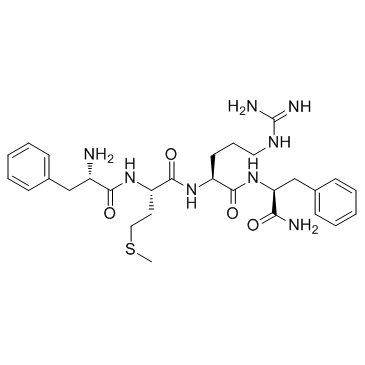Seven up acts as a temporal factor during two different stages of neuroblast 5-6 development.
Jonathan Benito-Sipos, Carina Ulvklo, Hugo Gabilondo, Magnus Baumgardt, Anna Angel, Laura Torroja, Stefan Thor
文献索引:Development 138(24) , 5311-20, (2011)
全文:HTML全文
摘要
Drosophila embryonic neuroblasts generate different cell types at different time points. This is controlled by a temporal cascade of Hb→Kr→Pdm→Cas→Grh, which acts to dictate distinct competence windows sequentially. In addition, Seven up (Svp), a member of the nuclear hormone receptor family, acts early in the temporal cascade, to ensure the transition from Hb to Kr, and has been referred to as a 'switching factor'. However, Svp is also expressed in a second wave within the developing CNS, but here, the possible role of Svp has not been previously addressed. In a genetic screen for mutants affecting the last-born cell in the embryonic NB5-6T lineage, the Ap4/FMRFamide neuron, we have isolated a novel allele of svp. Expression analysis shows that Svp is expressed in two distinct pulses in NB5-6T, and mutant analysis reveals that svp plays two distinct roles. In the first pulse, svp acts to ensure proper downregulation of Hb. In the second pulse, which occurs in a Cas/Grh double-positive window, svp acts to ensure proper sub-division of this window. These studies show that a temporal factor may play dual roles, acting at two different stages during the development of one neural lineage.
相关化合物
| 结构式 | 名称/CAS号 | 分子式 | 全部文献 |
|---|---|---|---|
 |
Phe-Met-Arg-Phe,酰胺
CAS:64190-70-1 |
C29H42N8O4S |
|
Persistent long-term facilitation at an identified synapse b...
2014-04-02 [J. Neurosci. 34(14) , 4776-85, (2014)] |
|
Some aspects of the immunolocalization of FMRFamide in the n...
2012-01-01 [Acta Biol. Hung. 63 Suppl 2 , 83-7, (2012)] |
|
Novel insights into the echinoderm nervous system from hista...
2012-01-01 [PLoS ONE 7(9) , e44220, (2012)] |
|
FMRF-amide immunoreactivity pattern in the planula and colon...
2013-02-01 [Zoology (Jena.) 116(1) , 9-19, (2013)] |
|
Targeting a neuropeptide to discrete regions of the motor ar...
2012-06-15 [J. Exp. Biol. 215(Pt 12) , 2108-16, (2012)] |